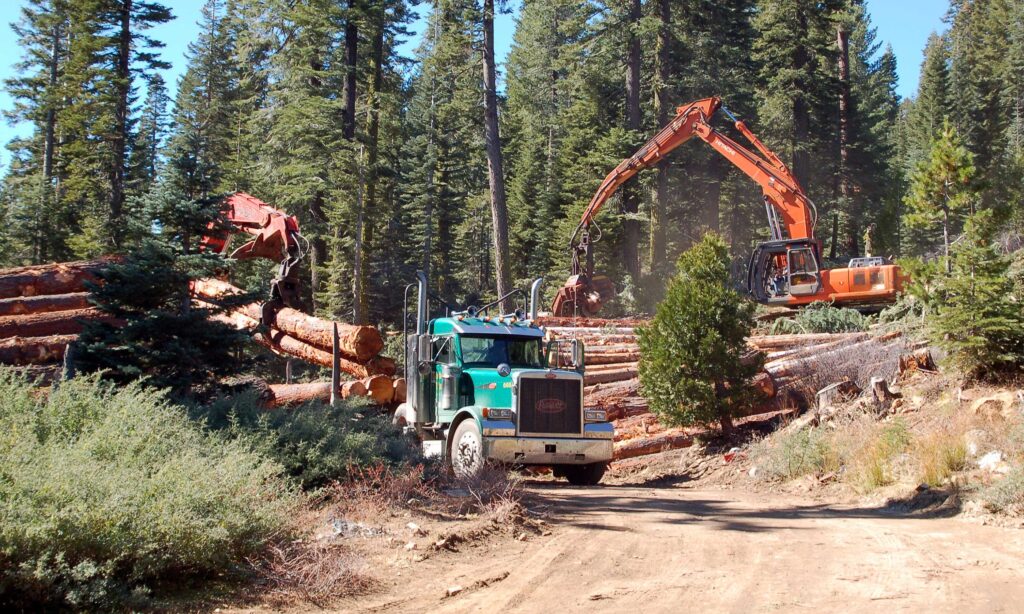
(Credit: Cowgirl Jules via Flickr)
The impacts of escalating wildfires — lives lost, evacuations, costly suppression, air quality and ecosystem damage — underscore the urgent need for a new approach that prioritizes the longer-term health of forests and wellbeing of communities. “Forest management” should no longer be synonymous with planning processes rooted in the forestry industry’s demand for wood. Proportionately, slightly more wildfire burned in the “managed” forest than in the “unmanaged” forest last year.
In Canada, governments have focused on trying to control fires for more than a century, to protect communities, infrastructure and wood supply. Fire-suppression efforts vary greatly across the country, depending on the values at risk. These efforts are absolutely needed to protect people and communities, but there are significant unintended consequences. While they may slow the spread of wildfires in the immediate term, suppression efforts can also create the conditions for more severe fires later on. This is known as the fire paradox: the accumulation of forest fuels as a result of fire suppression can feed subsequent fires.
Several studies also show that industrial logging practices can exacerbate wildfire risk, particularly in the near-term. Clearcut logging often leaves behind unutilized smaller trees, branches, needles, and stumps, which can dry out and can contribute to wildfire fuel. Dense conifer plantings to replenish wood supply can also be very fire-prone. It’s industry rhetoric to suggest that the only reason people have concerns about clearcut logging is that they don’t “look pretty”.
Wildfires often remove “ladder fuels” — low-growing vegetation that can carry fire from the forest floor to the canopy where it then spreads between tree crowns. Although forests naturally accumulate large amounts of biomass over time, shade and moisture retention from multi-layered closed canopies in older forests can reduce fire risk. Also, many old-growth forests exist because they grow on wetter, cooler sites that have been naturally spared from wildfire. In Canada, stand-replacing fires occur in the range of 20 to 500 years. In warmer and drier regions, in particular, younger forests are also at risk of burning.
Drivers of wildfires are complex and influenced by many variables. However, climate change plays an increasingly significant role, as wildfires are directly linked to hot, dry, windy spells. In fire-adapted forests, such as boreal forests, natural wildfire cycles caused by lightning have played an integral role in maintaining ecosystem health for millennia. Wildfires can remove sick and dying vegetation, stimulate natural regeneration, and support biodiversity, which in turn creates habitat for a range of species over time and space.
Generations before the arrival of European settlers, many Indigenous people cared for the land through controlled, low-intensity burns. A revival of these practices is underway. Many experts agree that – where needed – reducing fuel on the forest floor by removing smaller trees combined with low-intensity burning, tailored to each ecosystem, can help reduce the likelihood of high-severity wildfires. Some communities are also creating buffers of more fire-resistant deciduous trees. More active management of forests surrounding vulnerable communities makes sense. But when forestry industry lobbyists relay all the ways forests could be managed to reduce wildfire risk, they keep burying the lede; they want the public’s blessing to take more trees from healthy forests, not simply manage forest fuel.
There is no one-treatment-fits-all approach to address wildfires; we are likely to have failures along the way and we must learn to adapt. But increased wildfire activity should not be used as a Trojan horse to give the forestry industry even more power over decisions that affect forests in Canada under the guise of “fixing” a problem. Expanding industrial logging into remaining unlogged forests is not the solution; more comprehensive forest management is.
This article was originally posted as an op-ed in The Hill Times.
Our work
Always grounded in sound evidence, the David Suzuki Foundation empowers people to take action in their communities on the environmental challenges we collectively face.




